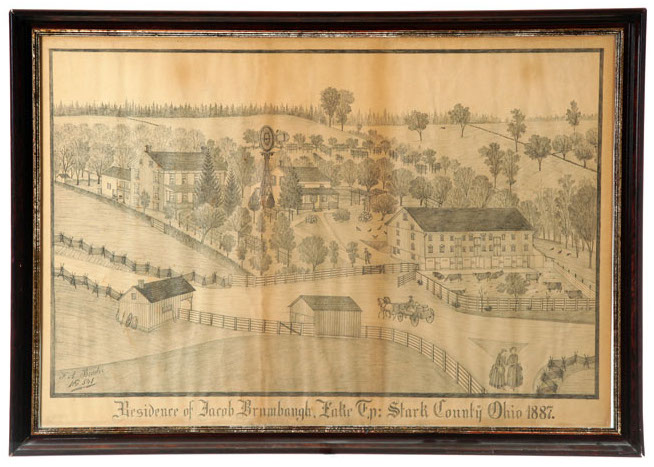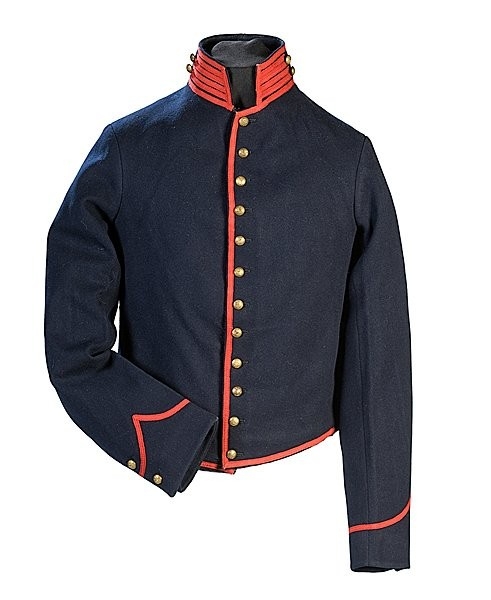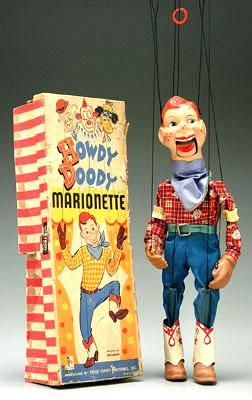Begun as Decoration Day in the wake of the Civil War, Memorial Day has become a day to remember all who have died in service to their country, but for many collectors, this sacrifice is remembered every day through the artifacts they gather. At Prices4Antiques.com, we see many searches for military- and service-related objects prized by buyers, including amazing things like a Japanese tank crew helmet from World War II, a U.S. one-pound Ketchum hand grenade from the Civil War, a complete set of cast-iron armor for a German machine gunner in World War I, and a Noble Brothers six-pound Confederate cannon from the Civil War. One need only to look at an object like a Civil War lieutenant’s frock coat found next to the body of an officer on the battlefield at Spotsylvania to be reminded of the cost of centuries of protecting freedom.
You are currently browsing admin’s articles.
Based on a CDC report on the dangers of mercury, dealers of antique weather devices face an uncertain future.
No one would argue that mercury doesn’t belong in food or children’s playthings, but dealers of antique barometers, thermometers, and even clocks think that legislation prohibiting the sale of objects containing mercury may be an overreaction, likened to cracking a nut with a sledgehammer. Still legislation exists in many states banning the sale of some (but not all) devices containing mercury. Those states include Maine, Connecticut, Rhode Island, New York, Massachusetts, New Hampshire, Vermont, Washington, Illinois, Maryland, and California. The problem is that the legislation is often either unclear or worse, contradictory. Oregon, Maryland and Michigan have laws controlling mercury thermometers but not barometers. Since sometimes these two items are found together, it’s unclear whether it is permissible to sell them or not.
Rhode Island has attempted to quantify legislation, and bans the sale of mercury containing items based on the amount contained. A few states have regulations banning items they define as “mercury added products”. This, according to one agency is any formulated or fabricated product that contains mercury, a mercury compound or a component containing mercury. Illinois law states that after July of 2004, no mercury added novelty products may be offered for sale. It is unclear whether a barometer would be considered a novelty item, but what is clear is that the ambiguity of language as well as the variety of legislation from state to state makes it a risky business to deal in antiques containing mercury, particularly on the internet.
-By p4A Contributing Editor Susan Cramer.

A drawing by Ferdinand Brader, farm scene, numbered 541 and titled Residence of Jacob Brumbaugh, Lake Tp: Stark County, Ohio 1887
One of the “little mysteries” discussed at the 2012 Midwest Antiques Forum was the cipher that is Ferdinand Brader (1833 to ?). The Swiss-born Brader immigrated to the United States in the 1870s and was an untrained, itinerant artist who spent much of the late 19th century roaming Pennsylvania and northeastern Ohio, where he would exchange large bird’s-eye view drawings of farmsteads, complete in near-architectural detail (like the one pictured), for room and board. In many ways, there are great details of his work – from his drawings, we often know where he was and when, and while we don’t know how consistently it was done, many of the drawings are numbered, which allows for a further sense of chronology.
Brader’s life, however, remains a great mystery. Some accounts hint at alcoholism, but the incredible detail and precision of his drawings makes this hard to fathom. He had several stints in area infirmaries, but whether this is attributable to the true itinerant/vagrant nature of his life or to something deeper is unknown.
The largest mystery of the “little” mystery that is Ferdinand Brader, however, is his disappearance. In late 1895, Brader found he had inherited a considerable amount in Switzerland. In residence at the Stark County Infirmary at the time, it appears he made plans to travel there to claim his inheritance, but after this, he vanishes completely. Of course, news of someone in the town infirmary inheriting a small fortune piqued local interest, so other small reports crop up, with at least one account making it seem he did not leave town and vanish (death during journey or a happy old age with family?), but rather that he disappeared after going to pay a debt, suggesting far darker possibilities. Or, as one associate suggests, did he just have one of the asthma attacks that plagued him while alone in an “out of the way place”?
Brader’s life continues to come into focus, with recent discoveries indicating that regardless of what happened, he never collected his fortune. All this information and a number of newly discovered drawings are the result of a Brader exhibit scheduled for the Canton Museum of Art in 2014. Brader’s works truly are meant to be appreciated up close, so if you find yourself in the area, plan a visit to the exhibit and stop by the database or the exhibit’s site for some great details. Seems that even “small” mysteries from “out of the way places” often loom very large….
-Hollie Davis, Senior Editor, p4A.com
Television character collectibles were produced by a variety of manufacturers to help sell everything from the shows themselves to cereal and vitamins. Here are two popular shows from the 1950s and 60s and their nostalgia driven collectibles.
The Howdy Doody Show
First aired as a radio program in 1947, Howdy Doody with Buffalo Bob Smith ran for an astonishing 13 years. When the red-headed, gap-toothed western lad Howdy Doody ran for “President of all Kids” the network received 60,000 requests for his campaign buttons. This number represented one third of all US homes with television sets!
Due to the overwhelming popularity of the show, an almost unlimited number of items were made in the likenesses of Howdy Doody the puppet, and his costars, Dilly Dally, Buffalo Bob, Princess Summerfall Winterspring, and Clarabelle the clown (played by Bob Keeshan, aka, Captain Kangaroo). Howdy Doody themed toys were produced in mass quantities, and included puppets/marionettes, clothing, plush dolls, records, wind-up toys, beanies, a humming lariat, cookie jars, figurines, ear muffs, an electric doodler, a keychain puzzle, stickers, comic books and child sized chairs. Children loved Howdy and played with his toys, so vintage toys in excellent condition are hard to find and can run into fairly high sums.
Popeye the Sailor
Popeye got his start in the comics, but soon after, made a successful leap to the silver screen. Between 1933 and 1957, Popeye appeared in movie cartoons 243 times, and by 1935, he was more popular than Mickey Mouse. In 1941, Popeye the Sailor was drafted by the U.S. Navy to help the war effort, and appeared in several cartoons to that end. In the 1960s he became a syndicated television show, and from then until 2004 appeared on television somewhere or other around the globe.
Vintage Popeye memorabilia is plentiful, but much of it on the market has been made since 1980, so collectors looking for authentic vintage Popeye should check carefully. Popeye, Olive Oyl, Bluto, Wimpy, and Sweet Pea appeared in a wide variety of forms, including comic books, story books, candy cigarettes, Colorforms, coloring books, ramp walkers, wind-ups, banks, figurines, mugs, decals, crayon sets, jack-in-the-boxes, lunch boxes, noise makers, gumball machines, dolls, plush toys, puppets, pins, Pez dispensers and more. As with most collectibles, toys in mint condition in their original packaging bring the highest prices. In Popeye’s case, since he went both healthy and PC, and no longer endorses smoking, his pipes and cigarettes have gone up in value.
-Reference note by p4A Contributing Editor Susan Cramer.
Reference & Further Recommended Reading:
To search the Prices4Antiques antiques reference database for valuation information on hundreds of thousands of antiques and fine art visit our homepage www.prices4antiques.com
One of the things that I like about history is that it puts the ridiculousness of the modern world in perspective. I’ve been reading The Grapes of Wrath lately (I don’t know how it took me this long either…) and wow, Steinbeck is almost prophetic in his discussions about unions and economy and our fate after being disconnected from the land. When I feel like the world can’t possibly go on in this crazy fashion for long without imploding, it comforts me to read about things like McCarthyism and Hoovervilles and hatpins.
That’s right, hatpins. You think the world is crazy now? In 1908, legislation was actually passed at the state level – in multiple states! – regarding the length of women’s hatpins. (You could have a hatpin that exceeded the legal permissible length; you just needed to apply for a permit first.) Why the sudden concern with the lowly, unobtrusive hatpin? Because those crazy suffragettes might use them as a weapon! I’m completely serious – I couldn’t make this stuff up.
It’s kind of hard to imagine the kind of woman who would wear a “Puss in Boots” hatpin using it to put someone’s eye out. I think you’d probably want to be much warier of someone with a griffin or a bear. (And, of course, a woman who could afford the Tiffany examples pictured above could pay someone else to poke your eyes out….) Regardless, hatpins offer a variety of beautiful display opportunities today, and they’re popular with collectors. Because women at virtually all levels of society wore them, you can find them at virtually all price points (although it’s likely that as hats declined in fashion that many hatpins were either cut down or reworked into other pieces of jewelry for every-day wear) and in a range from simple to elaborate. So keep an eye out (wrong expression maybe…) because valuable ones frequently end up unidentified and mixed in with miscellaneous boxes of jewelry!
-By Hollie Davis, Senior Editor, p4A.com








